Discover insider tips and strategies on how to increase CPM for maximum revenue. Unlock the secrets to boosting your earnings effectively.
CPMs are among the key metrics in the ad tech industry that can help publishers evaluate their inventory.
In December 2019, AdAge estimated that the internet will own more than 50% of ad spending worldwide by 2020. It’s only natural that publishers and advertisers continue to spend on digital ads.
But with great spending, comes the necessity for tracking. Measuring the performance of ads is an important factor in a publisher’s monetization strategy. One of the metrics for doing that is Cost per Mille (CPM). CPM provides insights into advertising spending and impressions.
In this post, we will cover the definition and types of CPM, issues behind low average CPM, and tips on how to increase CPM.
Before we get started to on how to increase CPM, let’s start with the basics and first learn what exactly is the CPM.
What is Cost Per Mille (CPM)?
‘Mille’ is Latin for thousand, which is why CPM is sometimes referred to as cost per thousand impressions.
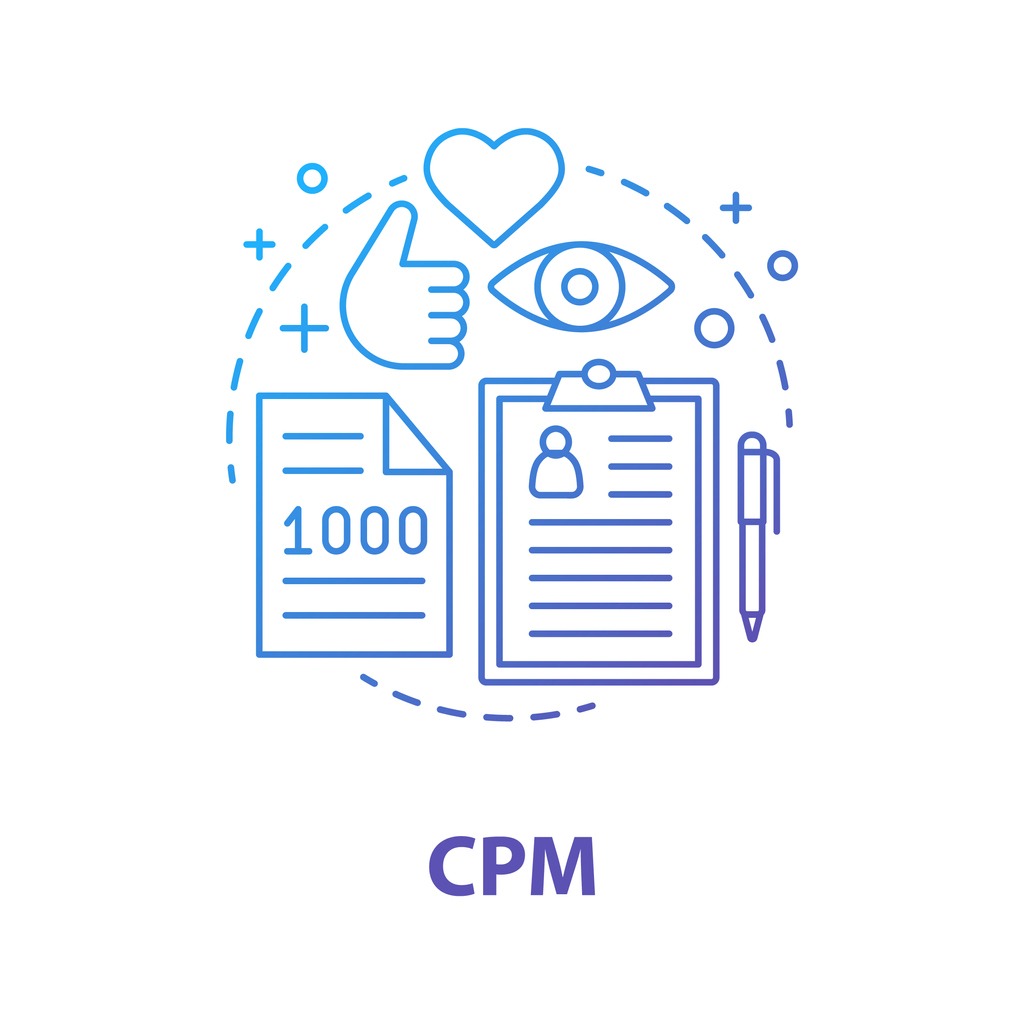
To put it simply, cost per mille is the amount of money that an advertiser spends (and a publisher receives) for every 1000 impressions on a publisher’s website.
The formula for calculating CPM is:
(Calculated Budget of the Campaign/Number of impressions)*1000
In the recent past, the CPM model has evolved and many types of CPMs have emerged. Following are some of the prominent CPM types used by advertisers and publishers:
eCPM
eCPM stands for effective CPM and is a metric that only publishers concern themselves with. This helps them in estimating the performance of their ad units. The formula for eCPM is:
(Total earnings/Number of impressions)*1000
The total earnings here include the amount earned from CPC, CPM, and other models.
qCPM
qCPM is simply an advertiser’s method of measuring that they get the bang for the buck. The ‘q’ here stands for quality and can include metrics such as ad viewability, ad delivery, etc. The formula for calculating qCPM is:
(Budget of the campaign/Quality impressions)*1000
vCPM
The ‘v’ in vCPM here stands for viewable and was introduced after Google announced in 2015 that publishers will receive money only for ads that have been viewed by visitors, and not for the ads that have been rendered without being viewed. The formula for vCPM is:
(Budget of the campaign/Viewable impressions)*1000
Target CPM
Publishers often set floor prices that remained static for all the incoming bids, hence missing out on earning a high revenue. Target CPM is the solution for this problem when the price floor becomes dynamic, thus helping publishers earn the amount their inventory deserves. This is a feature that can be set in Google Ad Manager.
Now to figure out how to increase CPM, you must be aware of what’s causing it to go down. Here are a few commons for low average CPMs.
Common Reasons for Low Average CPMs
It is normal for publishers to struggle with increasing their average CPM. Sometimes it’s the January slump, other times it is unexpected global events such as COVID-19 that can cause low CPMs.
A lot of solutions offered to them are mostly straightforward and generic, such as increasing ad viewability. Despite implementing these, publishers continue to look for solutions for increasing average CPM.
While the real issues for low CPMs vary from publisher to publisher, we have tried to cover some common issues that all publishers must look into.
Privacy Laws
In the past few years, privacy laws have impacted the ad tech industry to a considerable extent. First, it was the GDPR, then the CCPA, and now, there are more countries following suit such as Brazil introducing the LGPD.
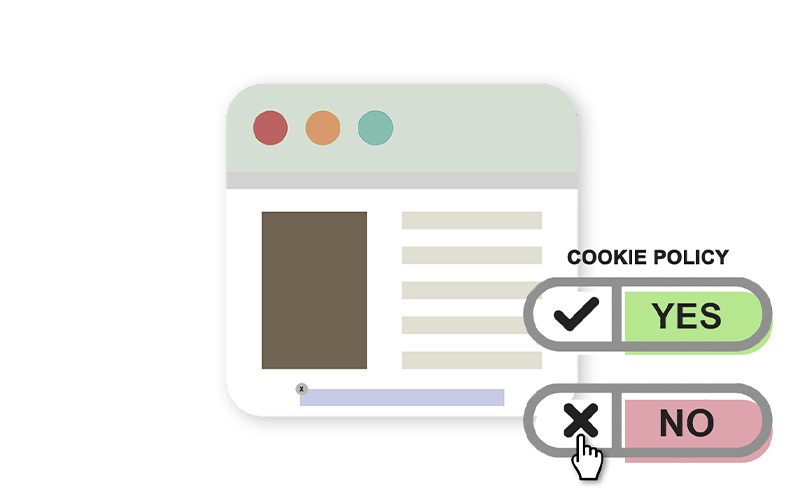
Privacy laws negatively impact data collection which is a primary method of ad targeting. Inadvertently, publishers bear the brunt of these measures by facing a reduction in their CPMs. Thankfully, there are ways to recover from this, which we’ll cover below.
Seasonality
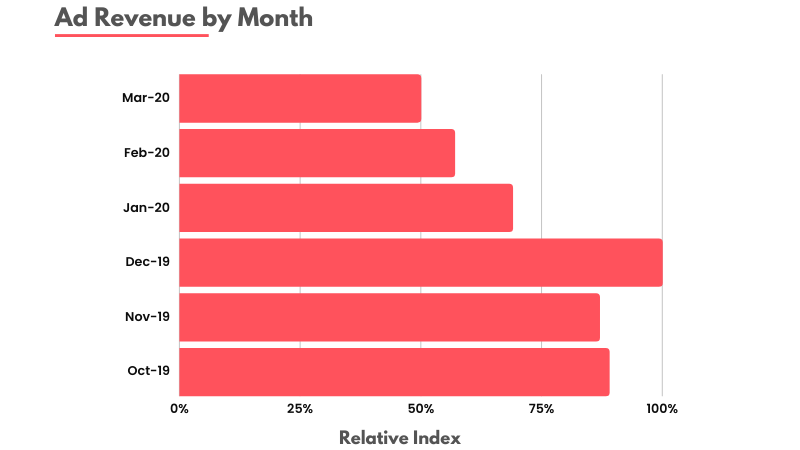
The ad tech industry is highly dependent on seasonality. If it’s the holiday season, publishers should definitely brace themselves for the impact. In other cases, massive socio-political events such as COVID-19 can also affect the average CPM and render publishers with little opportunities to recover.
Ad Formats and Placement
Sometimes, publishers are just not using the right ad formats on their website. For example, if medium-large scale advertisers still haven’t embraced video advertising, then they are missing out on opportunities for earning a high revenue. In other cases, if a publisher’s website has immense visual content and they are not experimenting with in-image advertising, then they are simply not using the right format.
Additionally, publishers might also not be creating ad placements in a way that gets them maximum revenue.
Ad Density
Less is more when it comes to advertising on a publisher’s inventory. Publishers often think the more the amount of ads, the higher the revenue. But this is a flawed analogy and will end up backfiring for nearly all publishers. Although a 30% ad density rule exists, publishers should still take a step back and assess if their websites offer less valuable content and more intrusive ads. If it’s the latter, website users will be inadvertently compelled to download ad blockers, which will definitely result in lower CPMs.
Quality of Content
User engagement is directly proportional to the quality of content on a publisher’s website. When the content is not valuable enough, it will lead to a high bounce rate. It could also mean that publishers will receive low organic traffic. These factors will negate the inclusion of ads since users will not stay long enough to boost the CPM.
Bad Traffic and Browsers
Publishers must understand that advertisers measure more than just ad viewability. They also pay attention to the amount of clicks which helps them in assessing how well the ad is performing. If a publisher is purchasing traffic from external sources to increase their overall traffic, there is a good chance that they’ll end up receiving bot traffic. This will definitely result in a low average CPM because bots do not interact with ads and have little or no value to offer.
Additionally, nearly all publishers also have to deal with browsers increasing tracking prevention. First, it was Safari and Mozilla that collapsed third-party cookies. Now, with Google also sunsetting these cookies by 2022, publishers will definitely have a hard time in targeting ads, resulting in a low average CPM.
How to Increase CPM?
Programmatic advertising and the volatile nature of CPMs always require a certain level of optimization. Adding to that, publishers must first learn about maintaining an average CPM and eventually, move on to improving it. Here are some tips that all publishers can follow.
Here are a few tips for publishers to increase CPM.
Make use of header bidding
We are all aware that header bidding can help publishers boost their CPMs by up to 50% if deployed in the correct way. In that case, header bidding makes for a compelling case for all publishers to deploy in their ad stack. So if publishers still haven’t started using header bidding, the sooner they start, the better they can boost their CPMs.
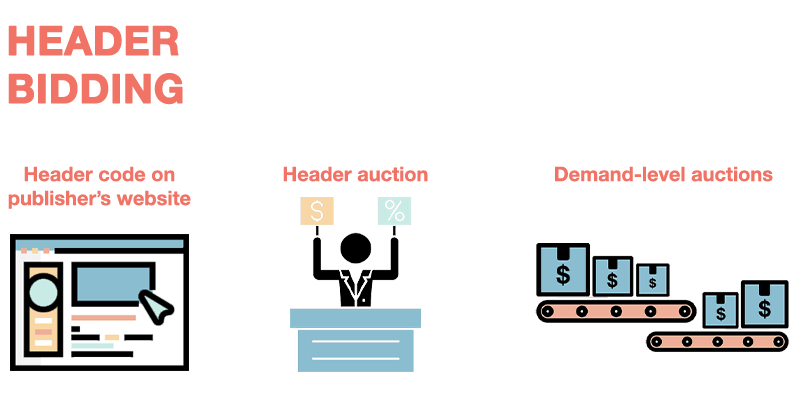
However, header bidding is quite technical in nature and often publishers are not able to implement it correctly. This, in turn, can result in lower CPMs than expected. Here are some steps that all publishers can follow:
- Partner with an ad network (like AdPushup) that has an Ad Ops team excelling in header bidding. Constant technical support and correct deployment will definitely result in high CPMs.
- Wait for the header bidding process to actually start showing results. When a publisher’s inventory is new, bidders are skeptical because there is no historical information for it. It might take a while before publishers see their revenue go up.
Once you get started with header bidding, it is also important to optimize the setup for the same for maximum yield. Now that a majority of publishers are using header bidding, publishers have to go the extra mile to stay on top of things.
A couple of major changes that you can make are using Prebid as your header bidding wrapper and try server-side header bidding. Other than this, choosing header bidding partners is a task that should be done while having all the necessary information about your inventory.
Leverage Audience Data Collected from Website
Probably the best resource that a publisher owns in today’s time is first-party data that they collect through analyzing their audience. This audience data is a highly valuable resource and can elevate the worth of a publisher’s inventory to a considerable extent. Publishers can either do this by investing in a quality data management platform/customer data platform or through audience segmentation in Google analytics.
Publishers should actively share their audience data with the buyers in order to show more contextually relevant ads to the users. Here are some other advantages of this tip:
- Sell inventory at a higher price by showing that highly relevant audience data is available for advertisers to capitalize on.
- Improved user experience: Audience gets to not only read relevant content but also see relevant ads.
Optimize Price Floor
Estimating price floors is a double-edged sword. If the price floor is set too low, publishers might end up hurting their revenue prospects. If it’s too high, publishers might receive lesser bids.
Publishers often do not consider the important aspects of setting price floors such as geography, ad size, etc. Eventually, most price floors are sheer guesswork.
In any case, all of these scenarios call for a solution like setting dynamic price floors through an automated process. Publishers must actively implement steps to collect accurate data from their end, thus enabling automated solutions to set optimum price floors for high CPMs.
Increase Ad Viewability
Improving ad viewability is one of the primary solutions provided for increasing average CPM. Advertisers have increased the number of metrics that they considered for analyzing an inventory. Ad viewability is one of those metrics, alongside brand safety, brand mentions, return on investment, and others.
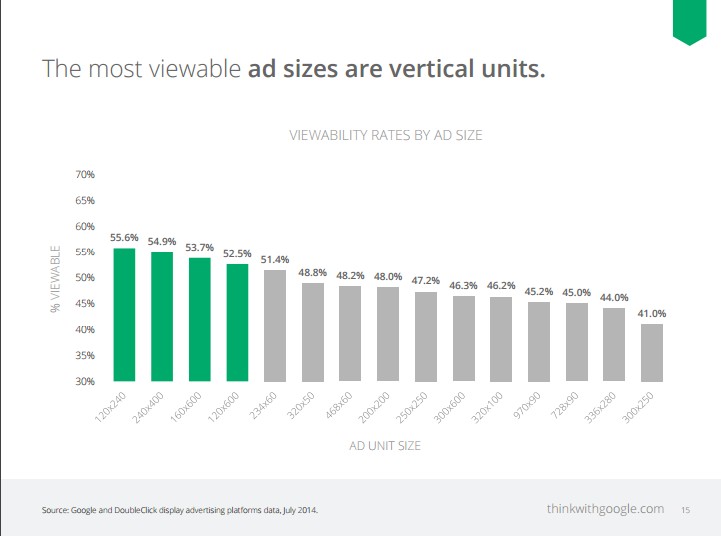
If your ad unit or inventory isn’t registering a high ad viewability rate, lower CPMs will be a persistent issue. Here are some quick tips that publishers can use:
- Try to fix the page load speed. Often, if the website loading is too slow, ads will also get rendered slowly, thus leaving no time for users to register an impression. For further solving this, publishers can also deploy lazy loading.
- Optimize for a mobile-first web environment. An increasing number of internet users are browsing on phones instead of desktop. So if the ads aren’t optimized for mobiles, then registering low CPMs will be unavoidable.
- Test different ad layouts and ad placements on the website.
Choose the right ad formats
We have already covered the importance of choosing the right ad formats for the website. Publishers must think through a user’s perspective. If the website has more video content, then video ads make more sense as the user clearly prefers videos. Here are some formats that publishers can experiment with:
Banner Ads
If the website is highly textual in nature, then banner ads are the way to go. Any other format of ads (apart from native) will distract the user and disrupt user experience.
Native Ads
Native ads look exactly the same as the content of the website and often get blended easily with the content. They often register a high CPM owing to minimized disruption for users.
Rich Media Ads
These are normally used to reduce banner blindness. They are a combination of rich media viz. images, gifs, videos, text, etc.
Follow Protocols for the Privacy Laws
Adhering to privacy laws is necessary and publishers must look for solutions for it, lest they end up violating policies. Here are some things that publishers can do for dealing with the likes of GDPR, CCPA, and others:
- Invest in a good consent management platform.
- Keep up with your ad server guidelines. For example, Google Ad Manager has strict measures for declaring line items in accordance with privacy laws.
- Perform an audit of your audience data and look for areas where you can optimize for privacy. For example, you can block traffic from a particular country in case it will not have a big impact on your overall traffic.
Analyze Traffic Sources
Last but not the least, publishers must regularly analyze their traffic sources for improving the quality of traffic on their website. This can be done through a web analytics service such as Google Analytics.
If a publisher is receiving a lot of bot traffic, they should look for ways to resolve it. If a publisher is Indian, but targets consumers in the USA, then it makes sense to invest in paid ads for getting premium traffic.
Additionally, publishers who highly rely on search traffic must invest some time in keyword research and getting relevant users through keyword targeting. When the traffic is relevant and premium, increasing the average CPM will become easy.
Reduce Bounce Rates
To minimize bounce rates, prioritize user engagement. Encourage users to stay on your pages by providing valuable content and ensuring ads load efficiently.
Maintain bounce rates below 70%, avoid sudden spikes, and eliminate pages with exceptionally high bounce rates. Avoid navigation bounces caused by deceptive button labels or headings.
Enhance User Session Duration
User session duration is a reflection of user interest. Promote prolonged stays and user interaction by facilitating easy navigation between pages and enhancing overall engagement.
Improve User Experience
Now here’s the penultimate tip on how to increase CPM and it’s none other than improving your website user experience. User experience is paramount for user retention. Place ads strategically, avoiding interference with navigation elements or obscuring essential information. Tailor ad formats for mobile users and prefer less intrusive options like Popunders over Pop-ups. Ensure that interstitial ads are easily closable.
Maintaining Natural CTR
Our last tip on how to increase CPM is to maintain natural CTR. You can maintain natural click-through rates (CTR) by encouraging organic clicks. Avoid incentivizing clicks or using dubious techniques to inflate click numbers, ensuring compliance with ad network rules.
Conclusion
Figuring out how to increase CPM cannot be a one-size-fits-all approach. If the above tips don’t work out, publishers should consider dealing with their CPMs on a case-to-case basis. Additionally, we also advise publishers to be vigilant of developments within the ad tech industry and how they can impact them.
FAQs on How to Increase CPM
CPM, the acronym for ‘cost per mille’, estimates the amount of money that a publisher receives for every 1000 impressions served on their website.
CPM is an important metric for both publishers and advertisers as it helps in keeping track of the ad performance. Advertisers can monitor the investments made on a publisher’s website effectively by taking CPM and CTR into account. Moreover, publishers can increase the value of their inventory by using target CPM.
(Calculated budget of the campaign/Number of impressions)*1000
CPMs can fluctuate throughout the year due to seasonality trends. For example, CPM can rise significantly during Thanksgiving and Christmas, however, it may witness a dip in January.

Deepak has a keen eye for detail and a deep understanding of the ad tech landscape. Whether it’s through in-depth articles, thought-provoking insights, or compelling storytelling, he’s dedicated to helping people navigate the complex world of ad tech with the simplicity of his words.
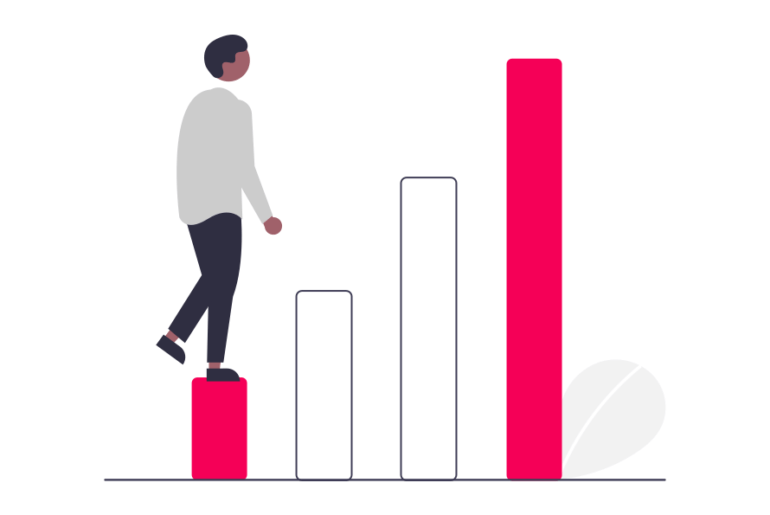



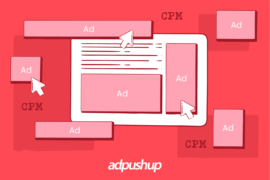



1 Comment
Your article is very nice and useful and help me to increase CPM and thank you sir